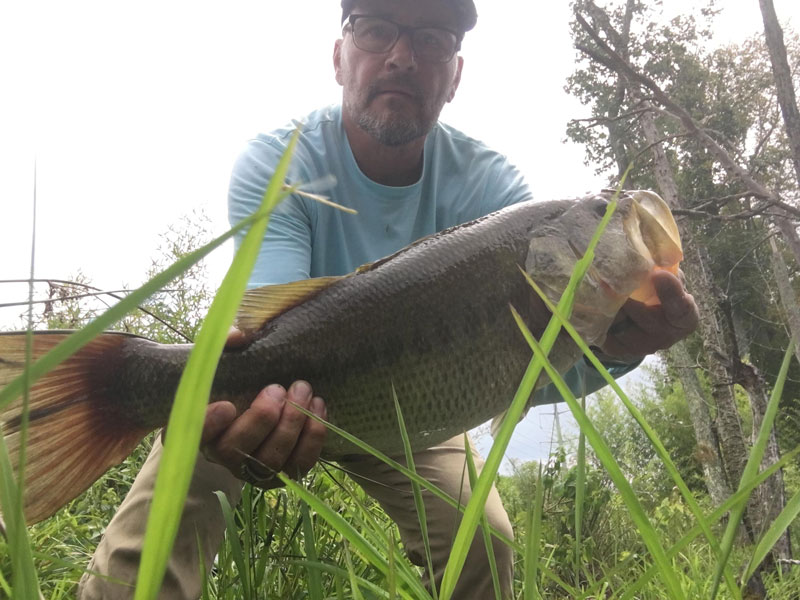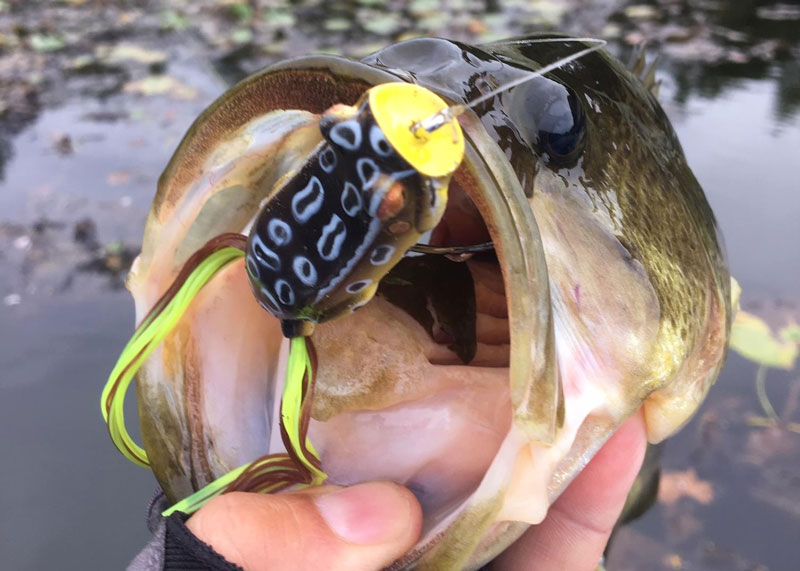I’ve been fishing for a few years now and the majority of that time I’ve fished from the shore of rivers, lakes, and ponds. My earliest memories of fishing are from the time I lived in Kansas and fished the Missouri River, its feeder creeks, and a small pond on the military post where my father was stationed. The first largemouth bass I ever caught was on a topwater bait that I found floating near the bank of that small pond. It was 1970, and I had just turned 10 years old. I tied the bait on to my shiny new Zebco 77, took a cast, and BAM, the bass took it. I think I ran all the way home to show the fish to my Mom. Not only was that bass hooked, so was I.

Can you believe I still have that Zebco 77 and the topwater bait? They both sit proudly in my den, bringing back memories of simpler times. Walking along a bank, the sun high in the sky and my fishing rod in hand, I would scope out the body of water looking for an open space so I could take a cast. Wishing I could reach that one spot that nobody else could reach. Thinking that the big one was sitting there, just waiting for my bait to swim past. I learned a lot about fishing back then. Mostly, I learned how to read a small body of water. I still apply those lessons today whether I fish from the bank, out of jon boat, or on a kayak.
Shoreline Fishing Prep
I approach smaller bodies of water prepared, meaning my planning starts at home. I decide what my target fish will be: bass, crappie, catfish, or maybe pickerel. I choose the tackle that is applicable for the species and pack it into a small plastic tacklebox, working with the theory that less is best. I don’t take more than what will fit into a small backpack. And I normally only take one fishing rod. For largemouth bass I take a seven-foot medium-action rod with a baitcaster reel, spooled up with 20- or 30- pound braid line and a six foot 12-pound fluorocarbon leader. For catfish I’ll take a stiffer rod with a spinning real and slightly heavier fluorocarbon leader. For crappie fishing I grab a smaller spinning reel with lighter six-pound test line. Chain pickerel are fished on a spinning or baitcaster reel on a seven-foot rod spooled with the same line I use for bass.
Grab a small backpack to carry your plastic tackle storage boxes and pick the applicable tackle. Pack a bottle of water and peanut butter crackers (hey, you’ll get hungry catching all those fish). Add a first aid kit and a soft tape measure to measure that lunker – the type a tailor uses, like the one in a sewing box, takes up little space. My wife hasn’t noticed hers is missing yet, so all good here! Also, bring a rag to wipe your hands on and a good pair of fishermen’s needle nose pliers for getting the hooks out. Be sure to pack a spool of fluorocarbon line, too. I’ve learned the hard way (by losing some big fish) that you don’t want to be too lazy to replace a frayed leader.
Shoreline Fishing By Species
As for tackle, a good go-to bait for bass and pickerel is a 1/4-ounce white jig with a gray-blue paddle-tail swim bait. You can jig it off the bottom, swim it across the tops of weed beds, retrieve it next to a laydown, or cast it out of shallow water and over a drop off. If the water is cloudy I may throw a white spinnerbait with a gold-colored blade. Early morning or late evening I’ll use a Whopper Plopper topwater bait. I can adjust my speed or simply jerk it across the water. I take a plastic frog, too, because you never know if a pond will have thick grass and fishing on top will be your only option.

For crappie I’ll either use a small Beetle Spin dressed with a white twister tail, or a jig suspended a foot or so below a bobber. As for the Beetle Spin, I like chrome and gold blades and depending on water clarity use one or the other. In dirty water the gold blade is usually best, in clear water go for chrome. The jig under a bobber has also worked well for me over the years. Cast, retrieve a few feet, stop and repeat. Crappie will normally take the lure as it drops after a short retrieve.
Catfish fishing is by far the simplest. Thread on a slip sinker with a small splitshot sinker a foot from a number-10 or number-eight treble hook. Slip sinker size is determined by the flow rate of the creek or river; if your bait moves use a bigger sinker. Bait it with catfish or carp bait from the tackle shop, the type you find in a plastic container. Fish the bait in eddies formed in rivers, creeks, or the deep end of a pond. Once the bait settles to the bottom reel the line tight, then wait. Be sure to watch your rod. When the tip bounces you’ll have a fish on – but if you’re looking away the whole setup may be gone, dragged down-river by some monster catfish.
Final Approach
As for fishing a pond or lake, approach them both the same. Once you pick your fishing hole walk the banks looking for:
- Boat docks
- Change in shoreline material such as riprap
- Points of land and laydowns jutting into the water
- Birds fishing from the bank or diving
- Water flowing into the larger body of water, such as a feeder stream
In short, you’re looking for where the baitfish are.
I also love to fish when there’s a light wind. I’m not talking about winds that change with barometric pressure, but light winds that move the water against a bank, which in turn pushes the baitfish’s food in one direction. Game fish are pretty lazy, they like their food to come to them, and they’ll be nearby those baitfish. Always cast your bait along a bank that has wind pushing the water against it.
If you’re fishing a pond, also remember that it’s important to approach it without too much disturbance – fish can hear you, and can sense the vibrations of your footsteps. If you see fish, they’ve probably already seen you.
Lastly, keep in mind three points:
- Most game fish like food to come to them, so locating baitfish usually means you’ve located an area where there are predators.
- Fish like the shade because they can’t close their eyes. So fish often hide in grasses, alongside a downed tree, around big rocks, and in other shaded areas.
- They often ambush their prey then go to deeper water to eat, so you will find them where the water depth changes whether it’s a one foot drop-off or a ten foot drop-off.
Being limited to land isn’t necessarily a bad thing and often bank fishing can be quite productive – so grab that gear, load up the kids, and head to that pond, creek, or lake and catch some fish.
- By Eric Packard